How to Choose A Headphone Amplifier: Tube vs. Solid-State

Different Technology & Sound - What's Your Preference?
As an audiophile, the choice between a tube headphone amplifier and a solid-state headphone amplifier is a decision steeped in the pursuit of sonic excellence. Each type of amplifier brings its unique characteristics to the table, offering a distinct flavor to the audio experience. For those seeking the warm, rich tones and harmonically lush sound signature that tubes are renowned for, a tube headphone amplifier might be the perfect match. Conversely, if you prioritize transparency, accuracy, and a clean, detailed sound reproduction, a solid-state headphone amplifier could be the ideal choice. In this journey of sonic exploration, the decision between tube and solid-state amplifiers becomes a delicate balance of personal preference, headphone pairing, and the desired sound profile, all in the quest for audio nirvana.
Choosing is hard. It's great to have choices but it sure bogs down the decision-making process sometimes. Tube versus solid-state headphone amplifiers. Which one would you pick? You might already have one or the other. Or maybe you have both. Either way, if you have a headphone chances are that you need a headphone amplifier to go with it. One of the first choices you'll be presented with in choosing a headphone amplifier is do you want a tube amp or a solid-state one? This marks an important step in determining what kind of power and sound you'll set for your hi-fi audio system. Your headphones are the first part. Now, let's talk about some of the differences between tube and solid-state amps, and what that means for your music.

What Is A Tube Amplifier?
Tube technology has been around for a long time. There’s something nice about vintage – it’s foundational, it’s tried and true. Tradition. I know at least from my experience I’ll always choose a tube amp over solid state when it comes to guitar amplifiers. Why? Because there’s something about tube tech that makes your tone and sound come alive in a way that newer solid-state amplifiers just can’t match.
And that’s the thing to keep in mind throughout this whole conversation – that there is no right or wrong here – it’s about what you like and what sounds good to your ears. We all hear differently.
Tube headphone amplifiers tend to sound much warmer and fuller-bodied than solid-state headphone amps. The tubes provide a warmth to the tone that many audiophiles appreciate because it gives a perceived more dynamic performance as some people say. Tube technology is incredibly customizable too, because different tubes can have different sound properties – providing more or less warmth or greater detail if desired.

Coloration is a big part of the tube sound. Like headphones or speakers, different audio gear also has its own sound signature, so depending on your system, you can change the tubes in your amplifier to balance out a more desired sound signature overall, according to your listening preferences.
Tubes also provide a lot of heat when running for long periods of time. Older technology is not as efficient as newer solid-state designs and can produce a lot of heat comparatively speaking. The filament in the tube gets heated, as you would be able to see by the glow of the tube. The glass bulb can get extremely hot, which is why in some cases tube amps might not be the best choice if you live in an extremely hot climate or have small children who could potentially be very curious about neat-looking lights.
The other part of the equation is that tube amplifiers are noisy compared to their solid-state counterparts. The filaments in the bulb can produce noise, which is why sometimes you can hear popping and noise in the signal. This can also translate to low levels of distortion in your signal chain, but it's important to note that this type of distortion is usually desired as a coloration property rather than a negative quality of the sound.
Featured Tube Headphone Amplifiers
What Is A Solid-State Amplifier?
Solid state amplifier is the most prevalent amplifier technology on the market today. An alternative to older tube tech, solid-state amplifiers trade out the tube for transistors, op-amps, discrete circuits, and integrated circuitry. Solid-state technology is more efficient than tube tech, outputting less heat. Tube amplifiers usually expose their tubes as the most efficient way of dissipating heat - by simply exposing it to the open air. Solid-state take a different approach since everything is internal. Most solid-state amps use heat sinks on the sides of the amp or smaller units can even be constructed with aluminum chassis that help release the heat through the surface volume of the amp (See Chord Anni). They’re great options for those who live in hotter climates or have kids (so they don’t burn themselves on hot tubes) since they provide less heat overall.
Another benefit of solid-state design is the fact that components don’t necessarily need to be replaced – whereas on a tube amp the tubes themselves eventually wear out over time and will need to be swapped out. The design of solid-state amplifiers is also by nature much quieter than tube amps – no tube noise or added distortion gets into the signal with solid-state amplifiers.
That being said, you won’t find a drastic range of coloration from solid-state amplifiers. This is not to say that solid-state amplifiers cannot produce a warm and musical sound, but it will likely be more up to the speakers and cables to influence that desired sound signature in your music. Most solid-state circuitry will be great at providing detail and resolution, making it a perfect fit for music lovers who desire a more analytical and detail-oriented approach to their playback.
Since solid-state headphone amps are more common, they are usually the more affordable option of the two – depending on what you want in your headphone amplifier. Of course, there are always exceptions to the rule, and the sky is the limit as far as what is out there for your wallet to handle.
Featured Solid-State Headphone Amplifiers
Dragon Cables
Our HiFi Audio Dragon Cables bring out more of what you love in your music and audio gear. If you love your headphones but wish they had a bit more top-end sparkle - a Silver Dragon Headphone Cable would be a great option. If your USB cables keep dying - as many stock cables do - then check out our quality USB Audio Cables. We say time and time again that materials matter, and our audio cables and custom geometries actually help to bring out those desired properties in your gear and music. We make tons of custom options for our customers so that you can get the right HiFi Audio cable for your exact needs.
Verdict
Picking between the two comes down to preference in signature and ergonomics. Most importantly, you need to have a headphone amplifier with enough power to drive your cans efficiently. We've already talked about the difference in sound between tube and solid state, so if you listen to a handful of genres that sound best to you with either an analytical or more musical presentation, then that will greatly determine what you should choose. If you have speakers that are dry-sounding or lack depth, then you would want to choose a tube amplifier to help add some warmth and musicality to the presentation. Mixing and matching is a great way to find that perfect balance in your personal hi-fi system. Let's say you live in Florida - you might opt for a solid-state amplifier since tubes give off an incredible amount of heat in comparison. If you're running your amplifier a lot of the time (home theater/surround sound environments) it can certainly heat up a room, so to save your electricity bill and having to run your air conditioning over time, a solid-state power amp might be a better choice.
It's also good to keep in mind that you can find some very affordable solid-state headphone amplifiers in just about any size and budget. Tube amps, on the other hand, are usually larger desktop units, just a given by the nature of their design. Of course, there are portable music players out there that do have integrated tube circuits, but for the sake of this video, we're not going to classify them in the same category as standalone desktop tube headphone amplifiers.
Tube versus solid state: It's really up to you. Like everything, there are pros and cons to each, but when it comes to your sound quality the best thing to do is test out headphone amplifiers - see what sounds best to you. What matches best with your headphones and any other existing audio equipment you'll want to plug into your signal chain. It all makes a difference and as we say - everyone hears differently. It's just about what sounds best to you.
Recommended Products
Related Videos
We Answer Your FAQs on DACs
Chord Electronics DACs, Amps, & Streamers: The Ultimate Guide
Analog Cables or Digital Cables?

My dad told me to be responsible and get a job that would allow me to finance my passion for music. Well, I did. That's why I spend all day in a proverbial candy store for music lovers. It's a dream job really.
Ricky Kovacs is a performer at heart but loves to bring his passion and experience with music to others. With a background in both politics and religion, Ricky has a knack for writing about divisive topics - which is why at the end of the day he loves writing about the one thing that brings us all together: music. Outside of Moon Audio, Ricky enjoys performing music in his band, recording, video games, virtual photography, reading, traveling, partaking in the finest scotch, and spending time with his wife, newborn, and doggy.
Moon Audio strives to provide the most relevant collection of curated audiophile products for our customers. Our reviews and product guides are designed to inform our community and share our passion for audio technology. Whether you're just starting out or a seasoned professional, we're glad you joined us.
Want more? Sign up for curated content in your inbox.

BY: RICKY KOVACS |
Read Time: Approx. 14 min. TL;DR: At $4,995, the Madison delivers reference-level sound quality that rivals components costing four times... Read more

BY: RICKY KOVACS |
Read Time: Approx. 15 min. TL;DR: Flagship music streamer/DAC featuring dual DAC chips in dual mono configuration for reference-level sound... Read more

BY: RICKY KOVACS |
Read Time: Approx. 17 min. TL;DR: $499.95 wireless headphone delivering audiophile-grade sound quality with neutral, reference-tuning inspired by the legendary... Read more

BY: RICKY KOVACS |
Read Time: Approx. 19 min. Welcome to TEAC Audio For over 70 years, TEAC Audio has been one of the... Read more

BY: RICKY KOVACS |
The Premier Audiophile Headphones of the Year From closed-backs to planar magnetic, wireless, and more, the collection of headphones we... Read more

BY: RICKY KOVACS |
The Best Audiophile-Grade Headphones for Every Budget The best-selling audiophile headphones you should consider buying in 2026 aren't always the... Read more

BY: RICKY KOVACS |
Get Better Audio On The Go Portable hi-fi audio is in–because if we can take our excellent sound quality with... Read more
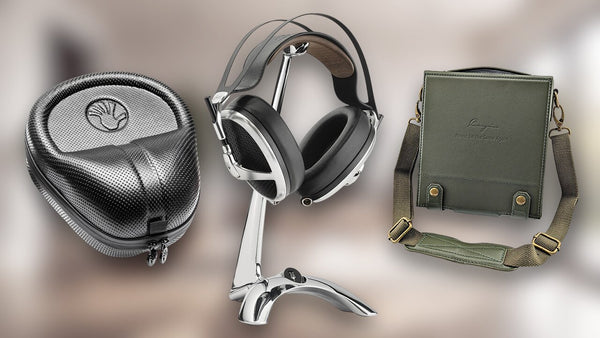
BY: RICKY KOVACS |
Read Time: Approx. 10 min. Summary: Proper storage is essential for protecting your high-end audio gear and maximizing its performance... Read more

BY: RICKY KOVACS |
The Premier Audiophile Headphones of the Year From closed-backs to planar magnetic, wireless, and more, the collection of headphones we... Read more

BY: RICKY KOVACS |
The Best Audiophile-Grade Headphones for Every Budget The best-selling audiophile headphones you should consider buying in 2026 aren't always the... Read more

BY: RICKY KOVACS |
The Best Audiophile Headphones for Everyday Listening From closed-backs to planar magnetic, wireless, and more, the collection of headphones we... Read more
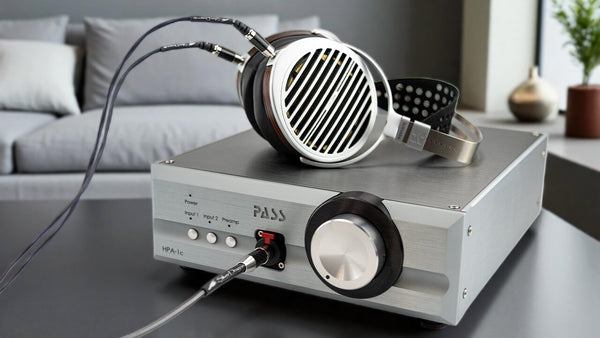
BY: RICKY KOVACS |
Read Time: Approx. 14 min. TL;DR Refined Evolution: Improves on the HPA-1 with an upgraded power supply and 10dB noise... Read more
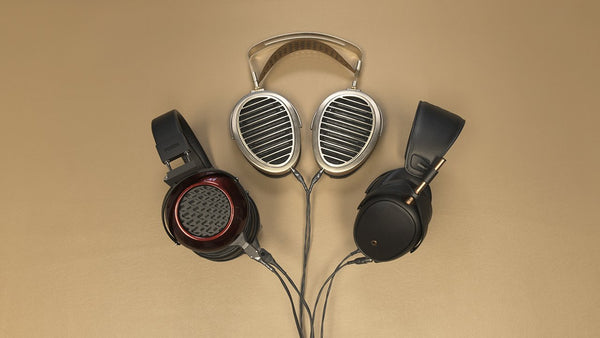
BY: RICKY KOVACS |
Moon Audio shares a list of the best audiophile headphones in the price range of $1000 to $3000 Read more
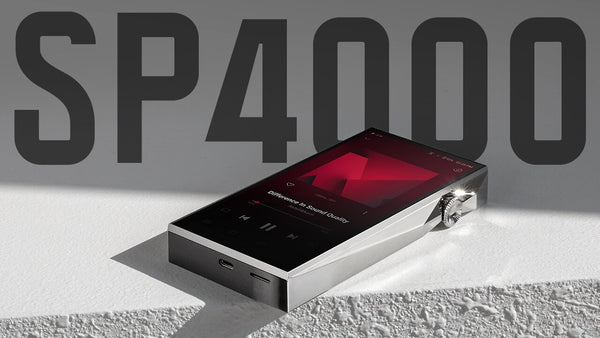
BY: RICKY KOVACS |
Read Time: Approx. 20 min. TL;DR First Astell&Kern DAP with full Android OS and Google Play Store access: Download any... Read more

BY: RICKY KOVACS |
The Best Desktop DACs and Music Streamers for your Audio Setup It's that time of year again, and we're taking... Read more
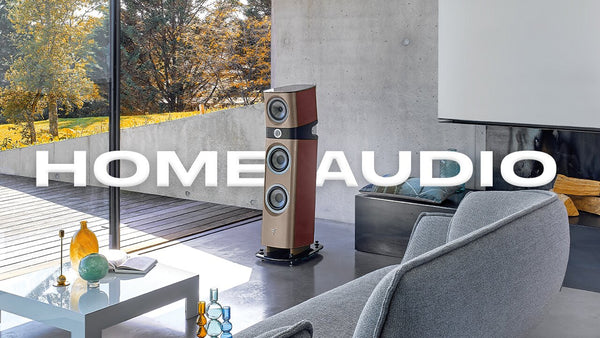
BY: RICKY KOVACS |
Read Time: Approx. 10 min. TL;DR: A high-quality home sound system transforms music into an immersive experience, offering clarity, depth,... Read more
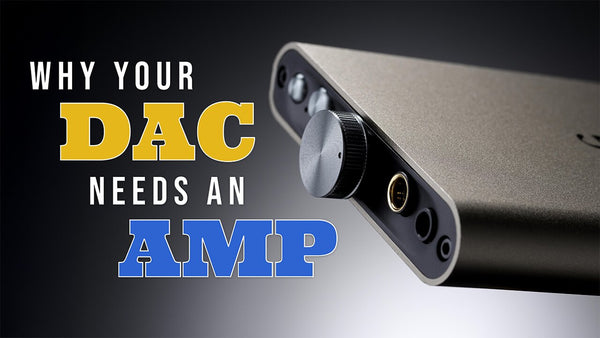
BY: RICKY KOVACS |
Read Time: Approx. 12 min. TL;DR You need BOTH a DAC and an Amplifier in every audio system: DAC handles... Read more

BY: RICKY KOVACS |
Read Time: Approx. 14 min. TL;DR: At $4,995, the Madison delivers reference-level sound quality that rivals components costing four times... Read more

BY: RICKY KOVACS |
Read Time: Approx. 15 min. TL;DR: Flagship music streamer/DAC featuring dual DAC chips in dual mono configuration for reference-level sound... Read more

BY: RICKY KOVACS |
Read Time: Approx. 17 min. TL;DR: $499.95 wireless headphone delivering audiophile-grade sound quality with neutral, reference-tuning inspired by the legendary... Read more

BY: RICKY KOVACS |
Read Time: Approx. 19 min. Welcome to TEAC Audio For over 70 years, TEAC Audio has been one of the... Read more

BY: RICKY KOVACS |
The Premier Audiophile Headphones of the Year From closed-backs to planar magnetic, wireless, and more, the collection of headphones we... Read more

BY: RICKY KOVACS |
The Best Audiophile-Grade Headphones for Every Budget The best-selling audiophile headphones you should consider buying in 2026 aren't always the... Read more

BY: RICKY KOVACS |
Read Time: Approx. 17 min. TL;DR: $499.95 wireless headphone delivering audiophile-grade sound quality with neutral, reference-tuning inspired by the legendary... Read more

BY: RICKY KOVACS |
The Premier Audiophile Headphones of the Year From closed-backs to planar magnetic, wireless, and more, the collection of headphones we... Read more

BY: RICKY KOVACS |
The Best Audiophile-Grade Headphones for Every Budget The best-selling audiophile headphones you should consider buying in 2026 aren't always the... Read more

BY: RICKY KOVACS |
The Best Audiophile Headphones for Everyday Listening From closed-backs to planar magnetic, wireless, and more, the collection of headphones we... Read more

BY: RICKY KOVACS |
Read Time: Approx. 12 min. The Best Wireless Headphones of 2025–And Your Best Bet for 2026 Whether you're an audiophile,... Read more

BY: RICKY KOVACS |
Read Time: Approx. 14 min. TL;DR: Bridges the gap between cheap sub-$300 turntables and premium $1,500+ models, offering audiophile-grade performance... Read more

BY: RICKY KOVACS |
Read Time: Approx. 19 min. Welcome to TEAC Audio For over 70 years, TEAC Audio has been one of the... Read more

BY: RICKY KOVACS |
Get Better Audio On The Go Portable hi-fi audio is in–because if we can take our excellent sound quality with... Read more

BY: RICKY KOVACS |
The Best Desktop DACs and Music Streamers for your Audio Setup It's that time of year again, and we're taking... Read more
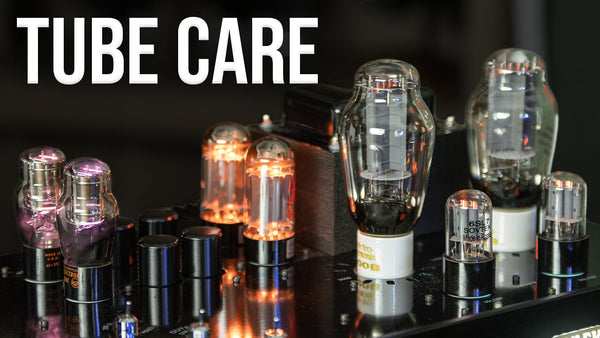
BY: RICKY KOVACS |
Read Time: Approx. 12 min. TL;DR: Know when to replace tubes: Watch for warning signs like excessive noise, blown fuses,... Read more

BY: RICKY KOVACS |
Read Time: Approx. 10 min. TL;DR: A high-quality home sound system transforms music into an immersive experience, offering clarity, depth,... Read more

BY: RICKY KOVACS |
Read Time: Approx. 14 min. TL;DR Refined Evolution: Improves on the HPA-1 with an upgraded power supply and 10dB noise... Read more

BY: RICKY KOVACS |
Read Time: Approx. 17 min. TL;DR: $499.95 wireless headphone delivering audiophile-grade sound quality with neutral, reference-tuning inspired by the legendary... Read more

BY: RICKY KOVACS |
The Premier Audiophile Headphones of the Year From closed-backs to planar magnetic, wireless, and more, the collection of headphones we... Read more

BY: RICKY KOVACS |
The Best Audiophile-Grade Headphones for Every Budget The best-selling audiophile headphones you should consider buying in 2026 aren't always the... Read more

BY: RICKY KOVACS |
The Best Audiophile Headphones for Everyday Listening From closed-backs to planar magnetic, wireless, and more, the collection of headphones we... Read more

BY: RICKY KOVACS |
Read Time: Approx. 12 min. The Best Wireless Headphones of 2025–And Your Best Bet for 2026 Whether you're an audiophile,... Read more

BY: RICKY KOVACS |
Read Time: Approx. 12 min. From Warm Fun to Balanced Precision Honoring Ten Years of Success Ten years is an... Read more

BY: RICKY KOVACS |
The Premier Audiophile Headphones of the Year From closed-backs to planar magnetic, wireless, and more, the collection of headphones we... Read more

BY: RICKY KOVACS |
The Best Audiophile-Grade Headphones for Every Budget The best-selling audiophile headphones you should consider buying in 2026 aren't always the... Read more

BY: RICKY KOVACS |
The Best Audiophile Headphones for Everyday Listening From closed-backs to planar magnetic, wireless, and more, the collection of headphones we... Read more

BY: RICKY KOVACS |
Read Time: Approx. 12 min. The Best Wireless Headphones of 2025–And Your Best Bet for 2026 Whether you're an audiophile,... Read more

BY: RICKY KOVACS |
Moon Audio shares a list of the best audiophile headphones in the price range of $1000 to $3000 Read more
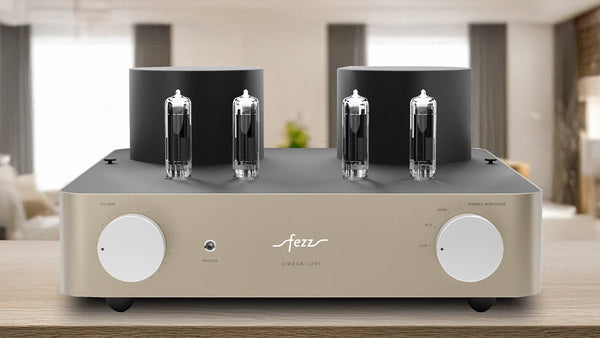
BY: RICKY KOVACS |
Read Time: Approx. 15 min. TL;DR 7W per channel of sheer power driving even the most demanding headphones like the... Read more

BY: RICKY KOVACS |
The Premier Audiophile Headphones of the Year From closed-backs to planar magnetic, wireless, and more, the collection of headphones we... Read more

BY: RICKY KOVACS |
The Best Audiophile-Grade Headphones for Every Budget The best-selling audiophile headphones you should consider buying in 2026 aren't always the... Read more

BY: RICKY KOVACS |
The Best Audiophile Headphones for Everyday Listening From closed-backs to planar magnetic, wireless, and more, the collection of headphones we... Read more

BY: RICKY KOVACS |
Read Time: Approx. 11 min. The Best IEMs to Buy in 2025 (And Keep Loving in 2026) The In-Ear Monitor... Read more

BY: RICKY KOVACS |
Read Time: Approx. 12 min. The Best Wireless Headphones of 2025–And Your Best Bet for 2026 Whether you're an audiophile,... Read more

BY: RICKY KOVACS |
Get Better Audio On The Go Portable hi-fi audio is in–because if we can take our excellent sound quality with... Read more
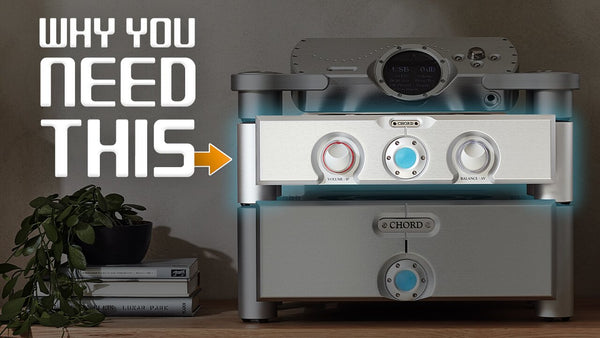
BY: RICKY KOVACS |
Read Time: Approx. 9 min. TL;DR Preamplifiers are always necessary: They boost weak audio signals to line level for proper... Read more

BY: RICKY KOVACS |
The Premier Audiophile Headphones of the Year From closed-backs to planar magnetic, wireless, and more, the collection of headphones we... Read more

BY: RICKY KOVACS |
The Best Audiophile-Grade Headphones for Every Budget The best-selling audiophile headphones you should consider buying in 2026 aren't always the... Read more

BY: RICKY KOVACS |
The Best Audiophile Headphones for Everyday Listening From closed-backs to planar magnetic, wireless, and more, the collection of headphones we... Read more

BY: RICKY KOVACS |
Read Time: Approx. 12 min. From Warm Fun to Balanced Precision Honoring Ten Years of Success Ten years is an... Read more

BY: RICKY KOVACS |
Moon Audio shares a list of the best audiophile headphones in the price range of $1000 to $3000 Read more

BY: RICKY KOVACS |
Read Time: Approx. 10 min. TL;DR Mid-century modern aesthetic with walnut wood ear cups and radial PC-ABS grilles inspired by... Read more

BY: RICKY KOVACS |
TL;DR DAPs have captured the audiophile community as the ultimate portable companion for everyday listening, regardless of the scenario Astell&Kern... Read more

BY: RICKY KOVACS |
Read Time: Approx. 12 min. From Warm Fun to Balanced Precision Honoring Ten Years of Success Ten years is an... Read more

BY: RICKY KOVACS |
PD10 Black Brings SP4000 Features to more DAP Users Astell&Kern has added a new Black finish to its PD10 Digital... Read more
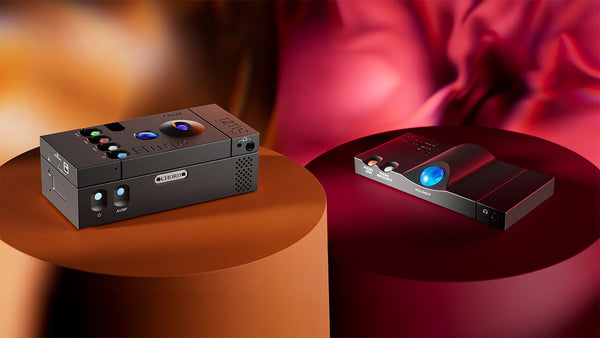
BY: RICKY KOVACS |
Read Time: Approx. 9 min. TL;DR Stackable and modular design allows components to work independently or together as an integrated... Read more
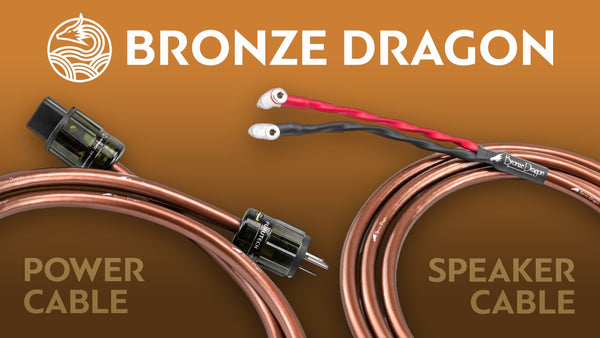
BY: RICKY KOVACS |
Unveiling Our Latest Dragon Audio Cable Innovations Discover our newest Dragon Cable innovations, the Bronze Dragon Power Cable and Bronze Dragon... Read more
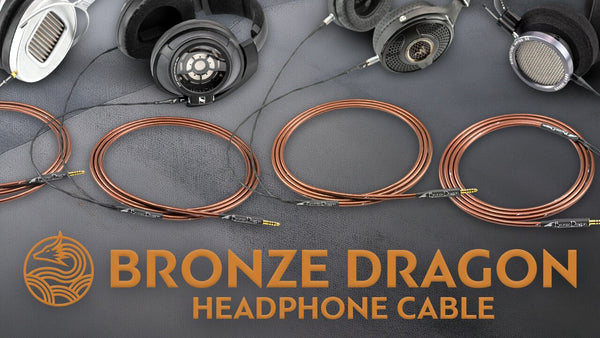
BY: RICKY KOVACS |
Unveiling Our Latest Dragon Audio Cable Innovation Discover our newest Dragon Cable innovation, the Bronze Dragon Headphone Cable. Featuring groundbreaking... Read more

BY: RICKY KOVACS |
Read Time: Approx. 10 min. TL;DR: A high-quality home sound system transforms music into an immersive experience, offering clarity, depth,... Read more

BY: RICKY KOVACS |
Read Time: Approx. 14 min. TL;DR Refined Evolution: Improves on the HPA-1 with an upgraded power supply and 10dB noise... Read more

BY: RICKY KOVACS |
Read Time: Approx. 9 min. TL;DR Preamplifiers are always necessary: They boost weak audio signals to line level for proper... Read more

BY: RICKY KOVACS |
Read Time: Approx. 12 min. TL;DR You need BOTH a DAC and an Amplifier in every audio system: DAC handles... Read more

BY: RICKY KOVACS |
Read Time: Approx. 19 min. Welcome to TEAC Audio For over 70 years, TEAC Audio has been one of the... Read more

BY: RICKY KOVACS |
The Best Desktop DACs and Music Streamers for your Audio Setup It's that time of year again, and we're taking... Read more

BY: RICKY KOVACS |
Read Time: Approx. 12 min. TL;DR: Know when to replace tubes: Watch for warning signs like excessive noise, blown fuses,... Read more

BY: RICKY KOVACS |
Read Time: Approx. 10 min. TL;DR: A high-quality home sound system transforms music into an immersive experience, offering clarity, depth,... Read more
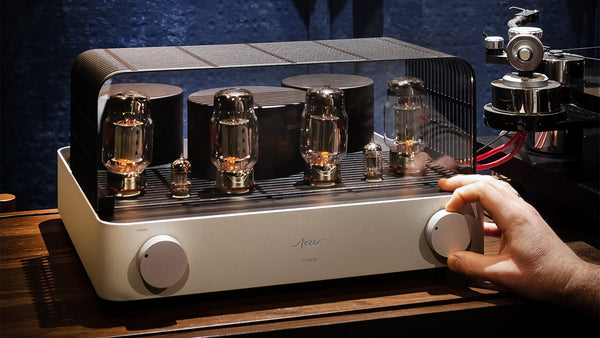
BY: RICKY KOVACS |
Read Time: Approx. 17 min. Combines traditional vacuum tube warmth with cutting-edge toroidal transformer innovation Clean, minimalist design aesthetic that... Read more

BY: RICKY KOVACS |
Read Time: Approx. 9 min. TL;DR Preamplifiers are always necessary: They boost weak audio signals to line level for proper... Read more








